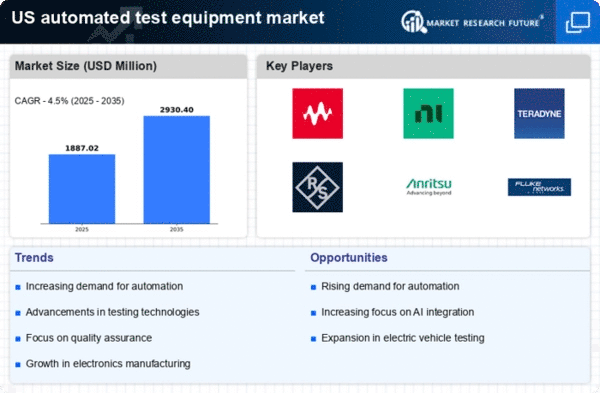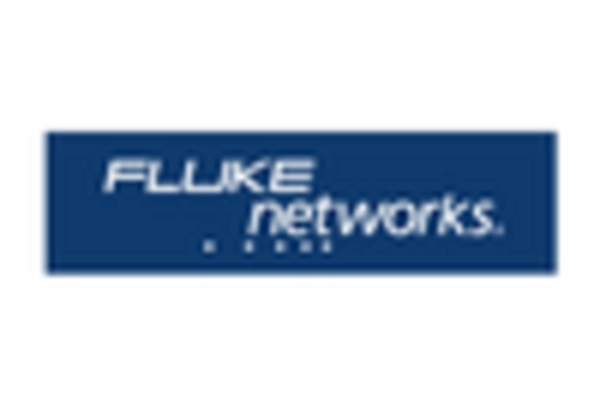Growing Focus on Cybersecurity Testing
The heightened awareness of cybersecurity threats is driving demand for specialized testing solutions within the automated test-equipment market. As organizations increasingly recognize the importance of safeguarding their systems, the need for comprehensive cybersecurity testing becomes paramount. This trend is particularly relevant in sectors such as finance and healthcare, where data breaches can have severe consequences. In 2025, the market is expected to see a growth rate of approximately 10%, as companies invest in automated testing solutions that can effectively identify vulnerabilities. The automated test-equipment market is thus positioned to capitalize on this growing focus on cybersecurity, as organizations prioritize the protection of their digital assets.
Increasing Demand for Quality Assurance
The automated test-equipment market is experiencing a surge in demand driven by the need for enhanced quality assurance across various industries. As companies strive to meet stringent regulatory standards, the adoption of automated testing solutions becomes crucial. This trend is particularly evident in sectors such as aerospace and automotive, where the cost of failure can be exorbitant. In 2025, the market is projected to grow at a CAGR of approximately 8%, reflecting the increasing emphasis on reliability and performance. thus, the automated test-equipment market is positioned to benefit from this heightened focus on quality, as organizations seek to minimize risks and ensure compliance with industry standards.
Rising Complexity of Electronic Devices
The growing complexity of electronic devices is a key driver for the automated test-equipment market. As products become more sophisticated, traditional testing methods may no longer suffice. This complexity necessitates the use of advanced automated testing solutions that can handle intricate testing requirements. In 2025, the market is anticipated to grow by approximately 9%, as manufacturers seek to implement robust testing frameworks that can accommodate the evolving landscape of electronics. thus, the automated test-equipment market is poised to thrive as companies invest in solutions that can effectively address the challenges posed by increasingly complex devices.
Shift Towards Automation in Manufacturing
The trend towards automation in manufacturing processes is significantly impacting the automated test-equipment market. As industries aim to enhance efficiency and reduce operational costs, the integration of automated testing solutions becomes essential. This shift is particularly pronounced in sectors such as consumer electronics and telecommunications, where rapid production cycles demand reliable testing mechanisms. In 2025, the market is projected to grow at a rate of around 8%, reflecting the increasing reliance on automation to streamline operations. The automated test-equipment market is thus likely to benefit from this broader trend towards manufacturing automation, as companies seek to optimize their testing processes.
Technological Advancements in Testing Equipment
Technological innovations are significantly influencing the automated test-equipment market. The introduction of advanced testing methodologies, such as virtual testing and simulation, is reshaping how products are evaluated. These advancements allow for more efficient testing processes, reducing time-to-market for new products. In 2025, the market is expected to witness a notable increase in the adoption of these technologies, with a projected growth rate of around 7%. As companies leverage cutting-edge tools to enhance their testing capabilities, the automated test-equipment market is likely to expand, driven by the need for faster and more accurate testing solutions.

















Leave a Comment